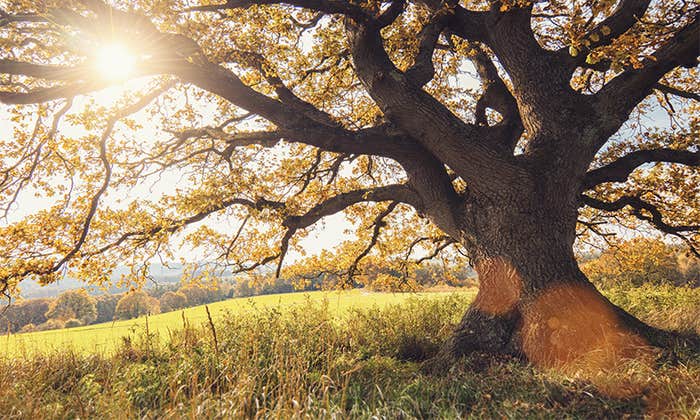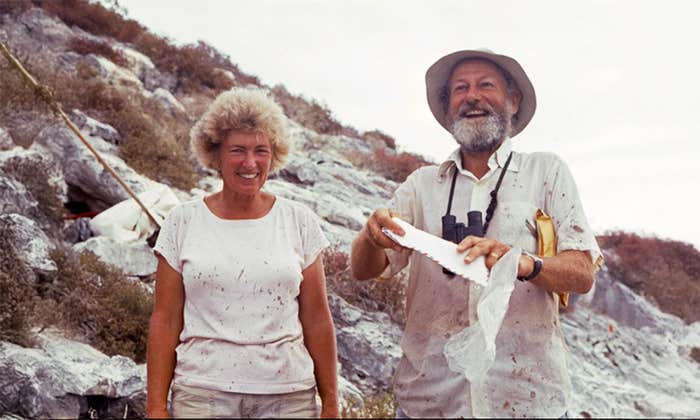Luis May Ku was intent on finding the plant. He felt certain that somewhere among the shrubs of his home village in Mexico or in the surrounding jungle grew the wild ch’oj. He needed the plant to extract indigo, a dye he could experiment with to unlock the recipe of “Mayan blue”—a pigment no longer available in the markets of the Yucatan peninsula, and a favorite color of the Mayan gods.
“There are five cardinal points in the Mayan cosmogony,” says May Ku, who is a ceramics artist and identifies as Mayan. In addition to north, south, east, and west, there is the cardinal point that stands for the center of the Earth. “Its color is a mixture of blue and green,” May Ku says. “It holds the world together.”
A native of Dzán, a tiny village nestled in Yucatan, May Ku splits his time between home and Cobá, a renowned hub of classical Mayan culture, where a collection of pyramids—estimated to be some 1,100 to 1,500 years old—attracts tourists and scholars in search of the past. At Cobá, May Ku is the director of the local cultural center and a public school teacher.
The secret was in the local clay.
“I started making faces of Mayan people who are currently living, who are in Mayan communities,” says May Ku. Practicing the costumbrismo syle of art that focuses on the everyday, May Ku wanted to use the same colors as his ancestors. White and red were available from the local stores, but he coveted blue, in that sacred hue that “purifies, and heals,” he says. A millennium ago, it was used by Mayans to decorate objects as well as to cover the skin of people and animals during rituals. But all the blues that May Ku could purchase were synthetic. “I didn’t like it,” he says.
After years of scouring for clues far and near—the internet and his local environment—May Ku found a single ch’oj plant (Indigofera suffruticosa) in the backyard of the very cultural center where he worked. He confirmed with a botanist friend that this was the plant he was looking for. Deciding between cutting the plant down to experiment immediately and setting up a small grove, May Ku settled for the patient option. It took him a few months to collect the seeds, plant them, and nurture them before attempting to extract the indigo dye.
“Friends in Cobá lent me a piece of land” May Ku says, “and we took care of [of the seedlings] with a group of families. I told them that you have to put a lot of water on it, you have to water it, it has to be in the sun.”
Then he harvested leaves and soaked them in water for a full day; the leaves began to ferment. He shook this broth to aerate it, and the dye precipitated. If you were to soak clothes in the fermented water, they would first bleach and then begin to turn it blue, he explains. “This practice was used by the ancient Mayans,” May Ku says, “to paint their clothes.”

But “Mayan blue is not just the plant,” May Ku says. The indigo dye is soluble and washes away quickly. To produce Mayan blue, it has to be heated together with special clay. “It is a local soil that combines with the plant, the molecular elements of the two tie up.”
Archaeologists and chemists studying Mayan artefacts dating to 700-1000 A.D. had determined that Mayan blue was indeed a composite pigment, binding organic and inorganic elements. Studies had determined that ink extracted from variants of Indigofera suffruticosa was likely mixed with either sepiolite or palygorskite clays in various combinations to produce a range of blue pigments used by Mayans, Aztecs, and other Mesoamerican tribes. Today it survives as color on parchment and sculptures from that period, having withstood the wear of time.
Scientists have attempted to reconstruct the traditional Mayan process of preparing the pigment because it is so durable, resistant to age, acid, weathering, biodegradation and even modern chemical solvents. The description of this process is absent from surviving pre-Hispanic Mesoamerican codices. These are records containing images and text, dating to 1250-1521 that are considered the scholarly legacy of Indigenous history, religion, and astronomy of the region before colonial contact. But the chemical composition is meticulously documented through spectroscopy and other techniques, using synthetic variants of Mayan blue and original scripts for using to color images, such as mythical creatures, human-like figures, flowing water.
May Ku set up a makeshift lab to try to recreate the pigment at home. He fermented the ch’oj and combined the ink with clay by experimenting in various ceramics techniques. The day he first saw a pigment that resembled Mayan blue, he says he was “ecstatic.”
“Mayan blue is born from a combination of trial and error,” says May Ku, and “I was able to arrive at this method … the closest to the pre-Hispanic way of how to do it.” Two separate laboratories, in Italy and in Mexico, confirmed that the chemical composition of the pigment he produced is analogous to the variety used by his Mayan ancestors, a millennium ago, says May Ku.
In the end, the secret was in the local clay. “I don’t share its name,” says May Ku. Thanks to May Ku’s efforts, after a thousand-year hiatus, a trade in Mayan blue has resumed in Yucatan. The land had kept the tradition all along. ![]()
Lead photo courtesy of Luis May
































